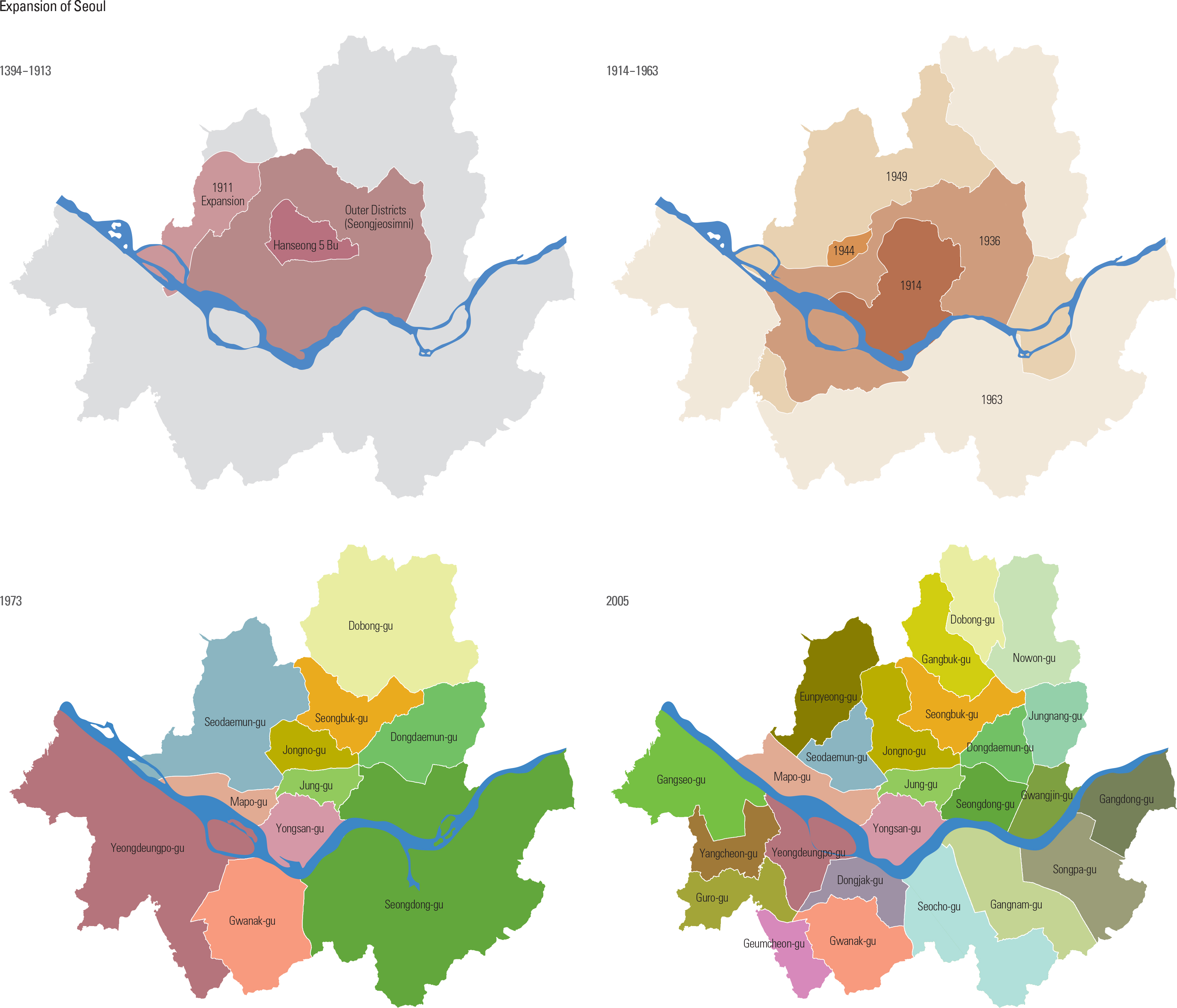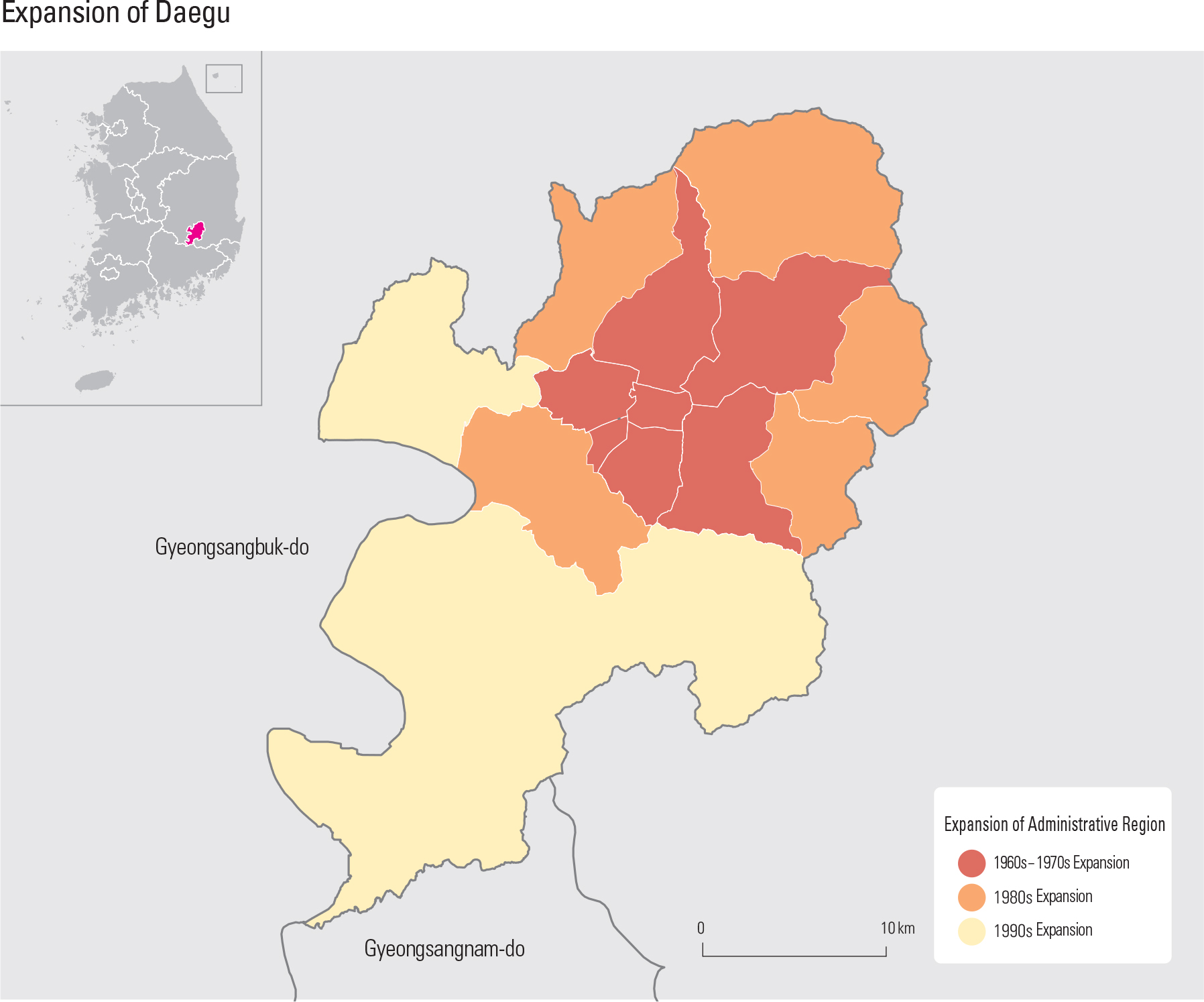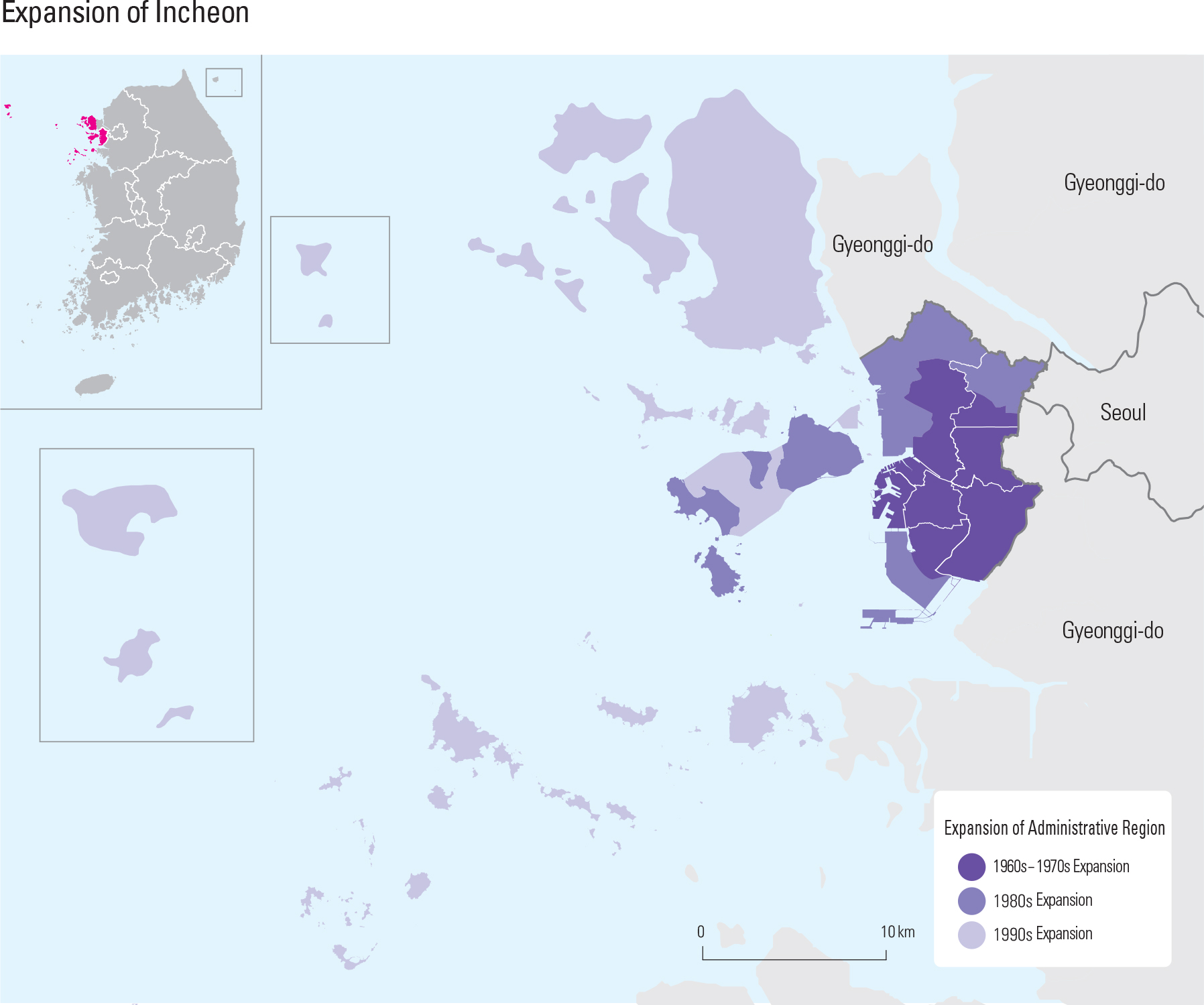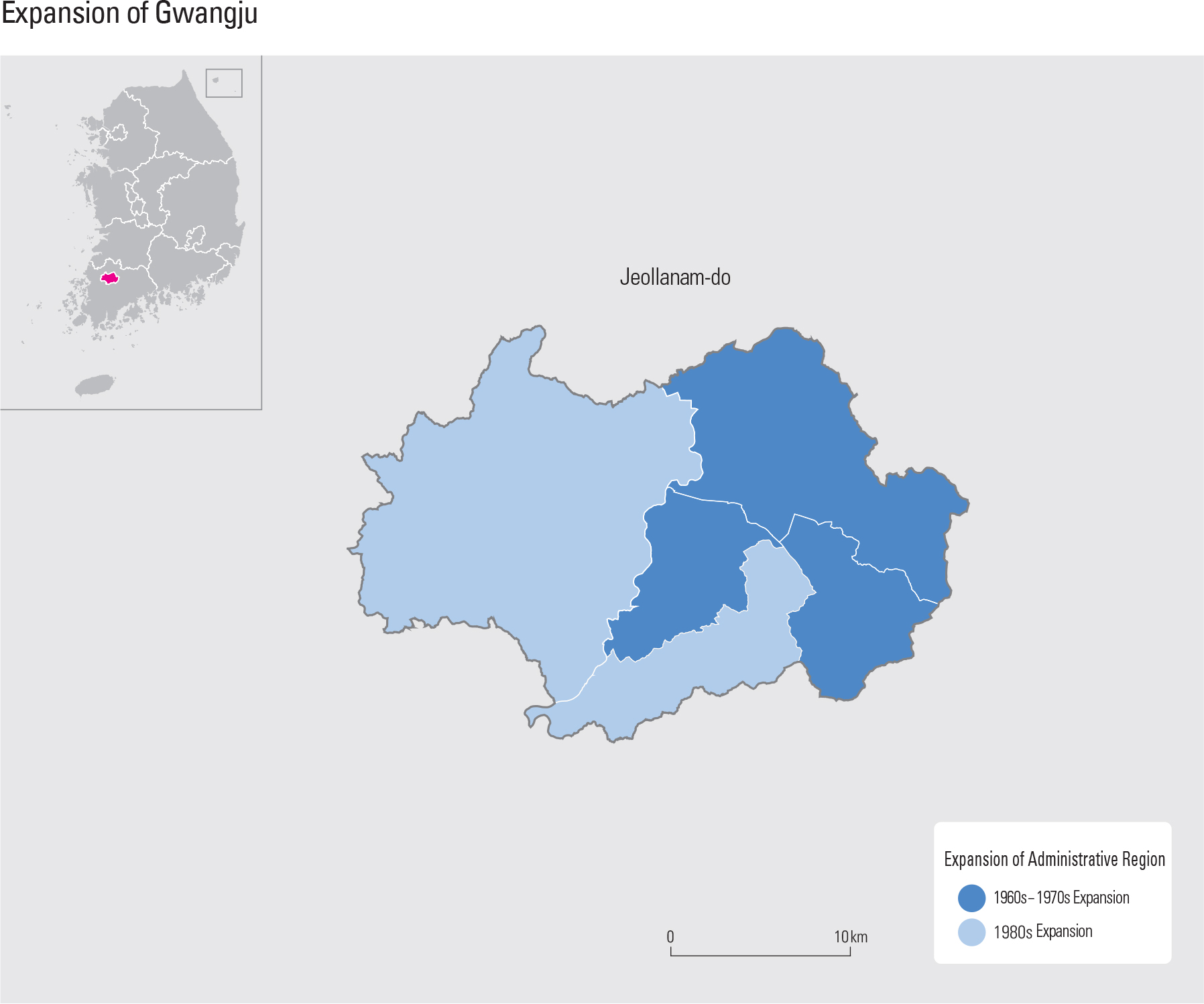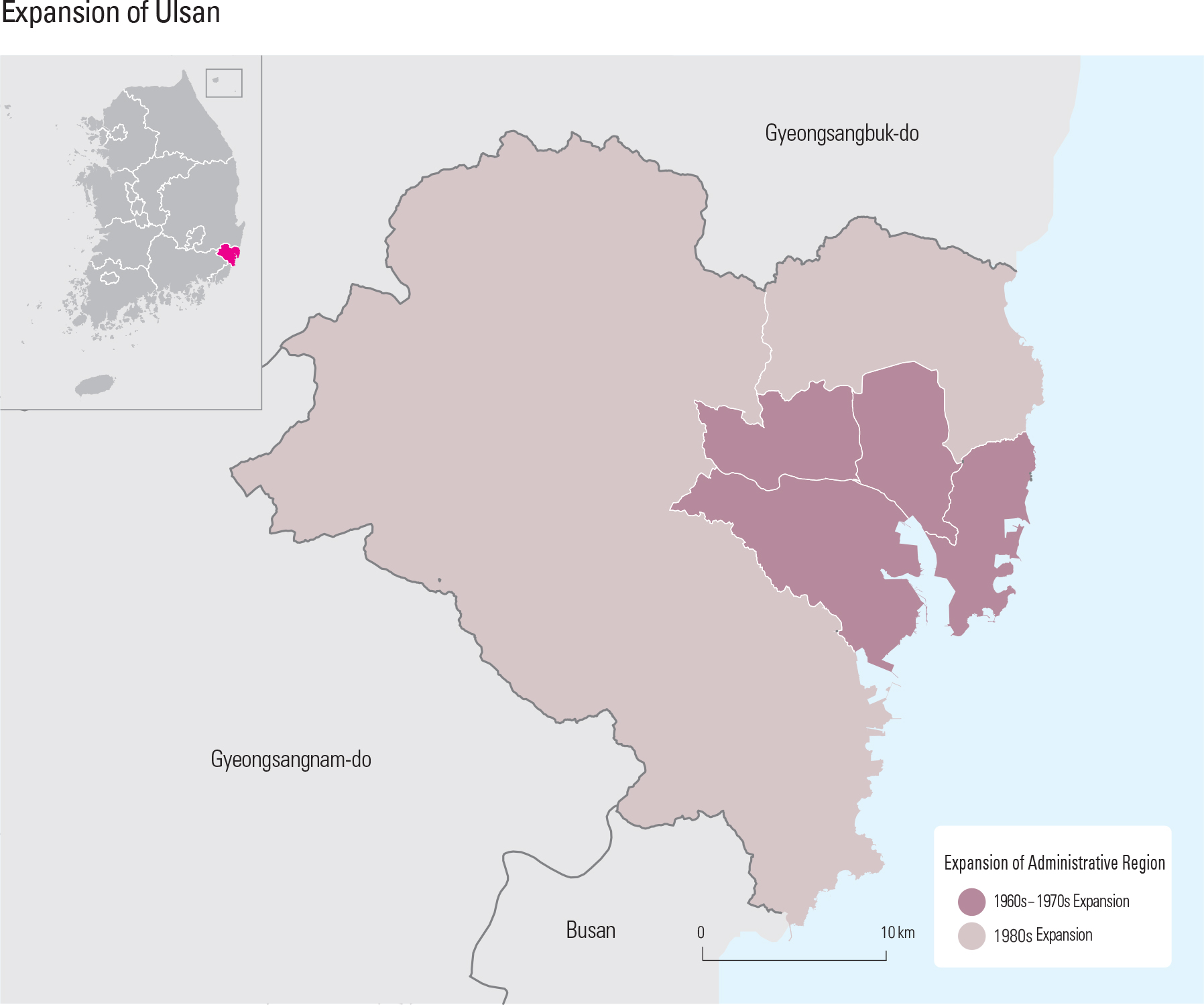Seoul has experienced a rapid increase in population and area in modern times. During the Joseon Dynasty (1392-1897), Seoul was surrounded by a fortress wall and consisted of Hanseong 5 Bu, its inner districts and outer districts (Seongjeosimni). The outer districts reached approximately 4 km outside the city wall. By the end of the Joseon Dynasty, and during Japanese colonial rule, the city’s boundaries grew as railroads and streetcar routes were constructed. A massive residential area was built in order to house the Japanese who moved to Korea and farmers who migrated to the city during this time period. By the end of the 19th century, the population of the city hovered above 200,000. Following its liberation from Japan, Seoul’s population was close to 900,000 and continued growing to 1,700,000 before the Korean War, when overseas Koreans returned to their country. Seoul’s population increased sharply even before industrialization; population concentration only accelerated as industrialization rapidly grew after the 1960s. The concentration of population resulted in development on the outskirts of the city, and the opening of subways facilitated urban expansion.
In 1963, some parts of Yangju-gun, Gwangjugun, and Gimpo-gun were incorporated into Seoul, expanding its total land area from 269 ㎢ to 593 ㎢. The current area of the city is 605 ㎢, as some parts of Siheung-gun and Goyang-gun were incorporated into Seoul in 1973. As Seoul expanded, the number of administrative districts also increased. In 1943, there were seven gus (districts), and because the administrative divisions were reorganized, the number of gu has grown to 25. Like Seoul, six other metropolitan cities have gone through increases in population and have expanded their administrative areas. As their populations have grown, metropolitan cities, serving as hub cities in the local area, became directly-controlled municipalities; in 1995, they were reorganized by integrating surrounding areas. After opening a port facility, Busan has evolved into an international harbor and the continuous development of port and city has attracted a larger population. In 1960, Busan had more than 1 million inhabitants and became a directly-controlled city in 1963. As the population increased, the banks of Nakdonggang and the Nakdong Delta were urbanized. Busan expanded its area by integrating neighboring Gimhae-gun and Changwon-gun. The current boundary of Busan was delineated in 1995 when the city incorporated Yangsan-gun and was raised to the status of a metropolitan city. Daegu became a directlycontrolled city in 1981 by integrating Dalseong-gun, Chilgok-gun, and Gyeongsan-gun into its area. The city limits significantly expanded as Deagu attained metropolitan cityhood in 1995. Incheon, a gateway city of the Seoul Metropolitan Area, became a directlycontrolled city in 1981 and was reorganized into a metropolitan city when it incorporated Ganghwagun and its neighboring island in 1995. Gwangju, the central city of Jeollanam-do in the southwestern region of Korea, attained cityhood in 1949 and was promoted to a directly-controlled city in 1963, following Busan, Daegu, and Incheon. When Gwangju incorporated Songjeong-gun and Gwangsan-gun in 1988, its administrative district was greatly expanded, and the city was raised to the status of a metropolitan city in 1995. Daejeon attained cityhood in 1949 and grew by including parts of neighboring Daedeokgun. In 1989, when it became a directly-controlled city, it incorporated the entire Daedeok and became a metropolitan city in 1995. Ulsan grew rapidly, thanks to the Industrial Complex located there, and attained cityhood in 1962. In 1995, Ulsan integrated Ulsan-gun and was raised to the status of a metropolitan city in 1997.
